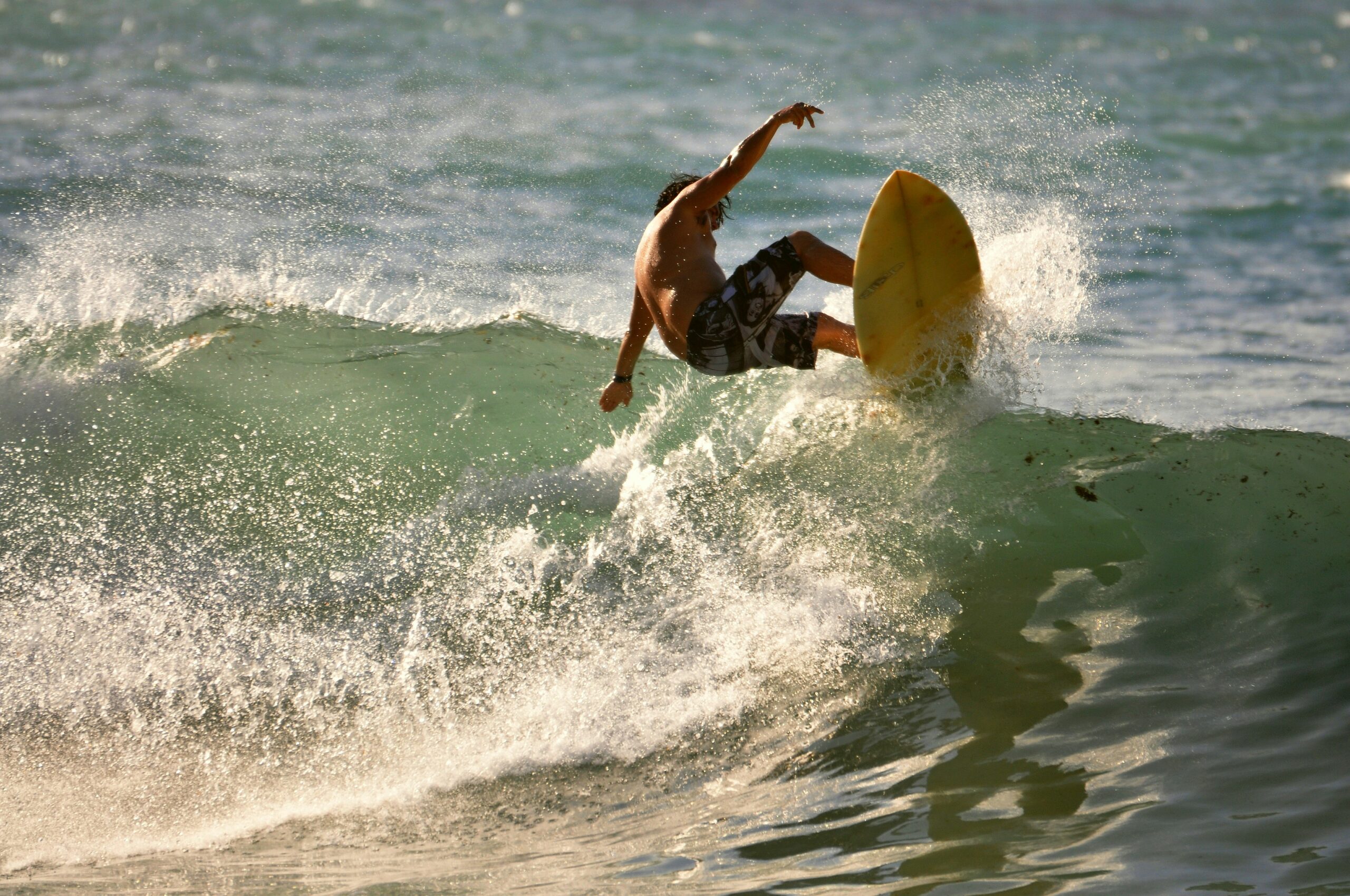
Surfing is more than just a sport; it’s a way of life that offers the opportunity to connect with the ocean and push the limits of personal skill and endurance. Whether you’re catching your first wave or performing advanced tricks, there are unique techniques tailored for each skill level that will help you progress and enjoy the experience. In this article, we’ll explore how to master surfing techniques based on your skill level, from beginners looking to gain confidence to seasoned surfers seeking to refine their craft.
The Basics: Surfing Techniques for Beginners
Focusing on the basic techniques that will provide a strong foundation is crucial for those just starting to surf. The first essential skill to master is paddling. A beginner surfer should practice paddling smoothly and efficiently, as this is the primary way to move around on the water. Lying flat on the board with your chest elevated, take steady strokes with both arms to propel yourself forward. Maintaining balance is key, and keeping your head up and your eyes forward is essential to maintain proper form.
Once you’ve gained confidence in paddling, the next challenge is learning how to pop up on the board. This motion involves transitioning from a lying position to a standing one as you catch a wave. Practice this movement on the beach before heading into the water. When you’re ready, place your hands near your chest, push up quickly, and bring your feet beneath you in one smooth motion. It may feel not easy at first, but with consistent practice, the process becomes second nature, laying the groundwork for a successful surfing experience.
Building Control: Intermediate Surfing Techniques
As you progress from beginner to intermediate, focus on improving control and balance on the board. One important intermediate technique is trimming, which involves adjusting your body position on the wave to control your speed. By shifting your weight towards the front or back of the board, you can maintain a steady speed or slow down when necessary. This allows you to ride the wave with greater control, making your ride smoother and more enjoyable.
Turning on the wave is another key skill for intermediate surfers. This involves carving along the face of the wave and maneuvering your board to change direction. To initiate a turn, lean into the wave and shift your weight toward your back foot. The more precise your body position, the sharper your turns will be. By practicing this technique, you’ll gain better control over your trajectory on the wave and increase the overall quality of your ride.
Advanced Techniques: Perfecting Power and Style
Once you’ve mastered essential control, advanced surfers focus on precision, power, and style. One of the most advanced moves is the cutback, which involves turning back toward the wave’s pocket after riding down the line. The cutback requires perfect timing and fluidity, as surfers must lean into the wave and shift their weight while maintaining speed and control. Mastering this technique allows you to continue riding in the most powerful section of the wave, ensuring a smooth and consistent ride.
In addition to the cutback, advanced surfers focus on incorporating style into their rides. Style refers to the smoothness and rhythm a surfer moves on the wave. Advanced surfers strive for fluid transitions between turns, maintaining a graceful flow throughout the ride. By refining your technique and focusing on the fluidity of your movements, you can add your unique flair and style to every wave you catch.
Big Wave Surfing: Tackling Large Waves with Confidence
Big wave surfing requires a unique set of skills, as larger waves come with their own set of challenges. The first critical technique is the ability to paddle into a big wave. Big wave surfers must generate significant speed and power to catch the wave before it breaks. The key to success is timing; big wave surfers must paddle quickly and powerfully to match the wave’s speed and position themselves in the right spot.
Once on the wave, maintaining control is essential. The late drop is a technique used to time your entry into the wave just as it begins to break. This move requires precise timing and expert knowledge of wave behavior. As big waves become more powerful, surfers must stay relaxed and focused, making quick adjustments as necessary. Mastering big wave techniques requires experience and the ability to read the wave and adapt your approach based on its size and shape.
Competitive Surfing: Elevating Performance in Heats
For surfers involved in the competition, perfecting your technique and performance is key to standing out in the heat. One of the most important aspects of competitive surfing is wave selection. Knowing which waves to ride can significantly affect your score. Surfers must quickly assess the conditions and choose waves that provide the best opportunities for tricks and maneuvers. Understanding the surf forecast and positioning yourself for the best waves is essential for a strong performance.
In addition to wave selection, competitive surfers must focus on performing complex maneuvers with speed, precision, and style. Judges look for surfers who can execute advanced moves with control and flair, such as aerials, snaps, and cutbacks. The ability to perform multiple maneuvers on a single wave can set a surfer apart from the competition. Competitive surfers often work with coaches to fine-tune their technique and ensure their performances are flawless during heats.
Continuously Improving Your Surfing Technique
Mastering surfing is a journey that takes time and dedication. Whether you’re a beginner learning the fundamentals, an intermediate surfer refining your skills, or an advanced surfer working on style and power, there is always room for improvement. Big-wave surfers take on unique challenges, while competitive surfers focus on perfecting their maneuvers to stay ahead of the competition. Regardless of your skill level, there is always an opportunity to enhance your surfing technique, and with every wave, you’ll grow as a surfer.